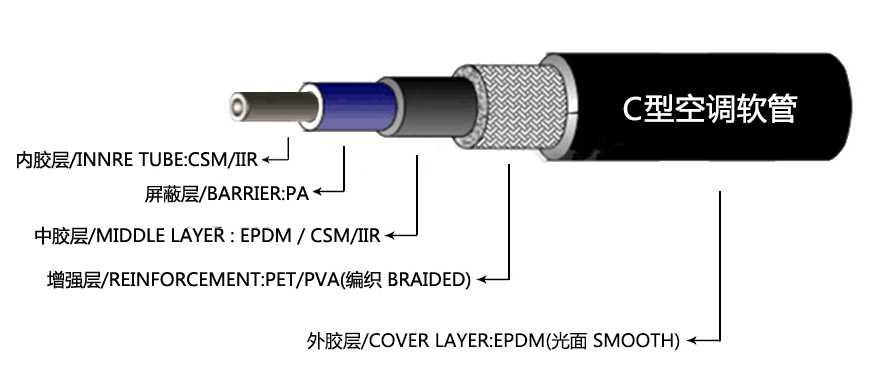power steering hose routing
Power Steering Hose Routing A Comprehensive Guide
Power steering is a vital system in modern vehicles that enhances maneuverability and reduces the effort required to steer the car. Central to this system is the power steering hose, which carries hydraulic fluid between the power steering pump and the steering gear. Proper routing of these hoses is essential to ensure efficient operation, minimize wear and tear, and prevent potential leaks or failures. In this article, we will discuss the importance of power steering hose routing, common routing techniques, and best practices for maintenance.
Importance of Proper Hose Routing
The routing of power steering hoses is crucial for several reasons. First, incorrect routing can lead to kinks or bends in the hose, which can restrict fluid flow and impede the effectiveness of the power steering system. When fluid cannot flow freely, steering effort is increased, making it harder for drivers to maneuver the vehicle, especially at low speeds or during tight turns.
Additionally, power steering hoses must be positioned away from heat sources, moving parts, and sharp edges. Excessive heat can cause the fluid to break down, leading to reduced lubrication and increased wear on the components. Likewise, contact with moving parts can lead to abrasion and potential ruptures, resulting in steering failure or loss of control.
Common Routing Techniques
When routing power steering hoses, mechanics generally follow several best practices to ensure optimal performance. Here are some commonly used techniques
1. Secure Fastening Hoses should be properly secured using brackets or clamps to prevent movement. Loose hoses can rub against other components, leading to chafing and eventual leaks.
2. Avoid Sharp Bends While some flexibility is inherent in hose design, sharp bends should be avoided. Gentle curves are preferred, as they allow for free fluid flow and reduce stress on the hose material.
3. Maintain Adequate Clearance Hoses should be routed with sufficient distance from exhaust components and other heat sources to prevent degradation of the hose material and fluid. A clearance of at least a few inches is recommended.
power steering hose routing

4. Use Heat Shields In areas where hoses cannot be moved away from heat sources, employing heat shields can provide an additional layer of protection. These shields reflect heat away from the hoses and help maintain fluid integrity.
5. Check for Obstructions During installation, it's crucial to ensure that there are no obstructions in the path of the hoses. This includes avoiding areas where hoses could become pinched or trapped between other vehicle components.
Maintenance Best Practices
Regular maintenance of power steering hoses is essential for longevity and reliability. Here are some tips on ensuring your power steering system remains in optimal condition
- Inspection Regularly inspect the hoses for signs of wear, such as cracks, fraying, or swelling. If any abnormalities are noticed, the hoses should be replaced immediately.
- Fluid Check Monitor the power steering fluid level and its condition. Low fluid levels can indicate leaks, while discolored or burnt fluid may suggest overheating or contamination.
- Flush the System Over time, power steering fluid can degrade and collect contaminants. Flushing the system according to the manufacturer’s recommendations helps maintain fluid efficiency and prevents potential damage.
Conclusion
Proper power steering hose routing is fundamental for the effective operation of a vehicle's steering system. By following the best practices outlined in this article—such as ensuring secure fastening, avoiding sharp bends, maintaining adequate clearance from heat sources, and conducting regular maintenance—drivers can ensure their power steering system operates smoothly and reliably. Investing time in proper hose routing and maintenance not only enhances vehicle performance but also contributes to overall safety on the road.
-
Ultimate Spiral Protection for Hoses & CablesNewsJun.26,2025
-
The Ultimate Quick-Connect Solutions for Every NeedNewsJun.26,2025
-
SAE J1401 Brake Hose: Reliable Choice for Safe BrakingNewsJun.26,2025
-
Reliable J2064 A/C Hoses for Real-World Cooling NeedsNewsJun.26,2025
-
Heavy-Duty Sewer Jetting Hoses Built to LastNewsJun.26,2025
-
Fix Power Steering Tube Leaks Fast – Durable & Affordable SolutionNewsJun.26,2025

